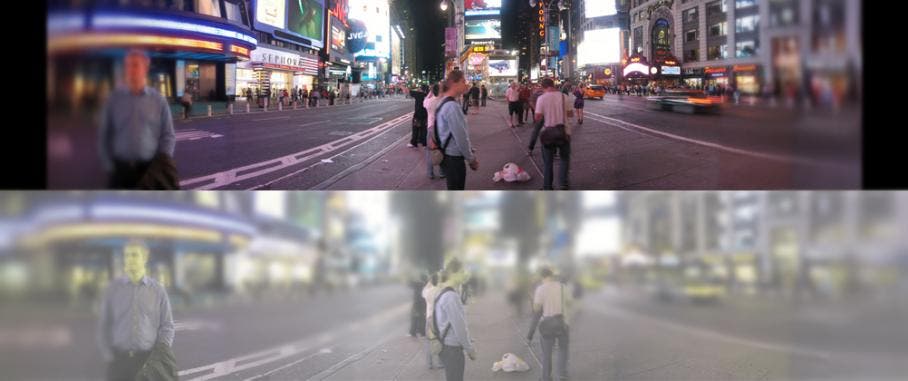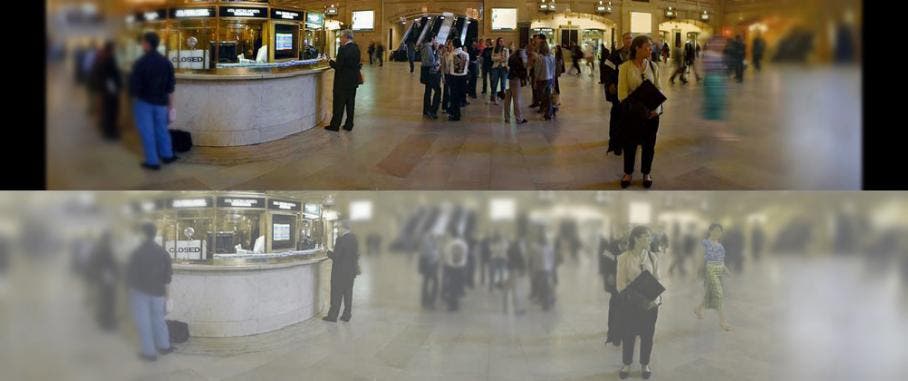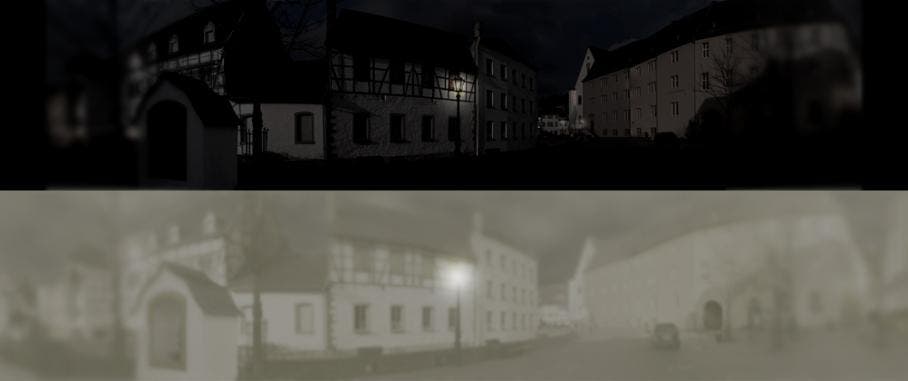As a cat owner myself, I’ve often wondered how feline vision differs from that of humans. Clearly, with their huge pupils and crocodile-like eyes, their view of the world must be truly different from ours. Artist Nickolay Lamm recently showcased a project that features various photos from two points of view: the human and the cat. While not the most realistic take on how cats see, these photos offer an interesting glimpse on how felines see.
To alter his photographs in a way similar to how a cat would see, Lamm consulted with ophthalmologists at the University of Pennsylvania’s veterinary school and a few other animal eye specialists. For each photo, the top view is an unfiltered photograph that portrays what we humans normally see, while the bottom view shows the same photo from the cat’s perspective.
You might notice that cat vision is much more blurry than ours. Cat’s see really well in the dark, but for this, they had to sacrifice fine details and some colours to be able to see well in low-light conditions. Also, notice that the cat’s vision is slightly broader than ours. That’s because cats see 200 degrees compared to our 180 degrees.
Cats don’t see very well at a distance. While human vision is perfectly adapted for seeing sharply 100 feet away, cats barely can distinguish fine details past 20 feet. Apparently, kitties miss out on the beauties of foreground landscapes.
But no matter, kitties are fine with seeing in the dark. Cat eyes have much more rods than humans – photoreceptor cells in the retina – which allows them to absorb more light and see better in low-light conditions. Their elliptical pupils can open very wide in dim light, but contract to a tiny slit to protect the sensitive retina from bright light. Ever took a picture of a cat only to see afterward that it looked like the spawn of Satan, with fire blazing from its eyes? This Terminator-feel happens because cats have what’s called an atapetum lucidum – a reflective layer that bounces light that hits the back of the eye out through the retina again for a second chance to be absorbed by the rods, which allows them to see even better at night.
via PopSci
[NOW READ] Cats not so cuddly after all – kill billions of animals in the US alone













